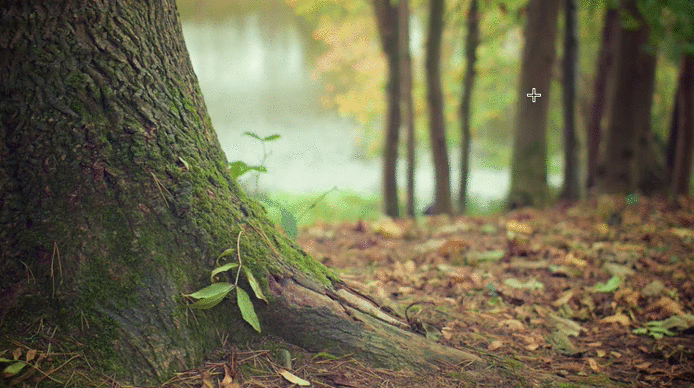A responsive image cropping tool for React.
- Responsive
- Touch enabled
- Free-form or fixed aspect crops
- Keyboard support for nudging selection
- Min/max crop size
- No dependencies/small footprint (~4.63KB gzipped)
npm i react-image-crop --save
Include the main js module, e.g.:
var ReactCrop = require('react-image-crop');
// or es6:
import ReactCrop from 'react-image-crop';Include either dist/ReactCrop.css or ReactCrop.scss.
import 'react-image-crop/dist/ReactCrop.css';
// or scss:
import 'react-image-crop/lib/ReactCrop.scss';If you prefer to include ReactCrop globally by marking react-image-crop as external in your application, then include react-image-crop from one of the following CDNs:
-
cdnjs (Coming soon)
<script src="https://unpkg.com/react-image-crop/dist/ReactCrop.min.js"></script><ReactCrop src="path/to/image.jpg" />You can of course pass a blob path or base64 data.
A callback which happens for every change of the crop (i.e. many times as you are dragging/resizing). Passes the current crop state object, as well as a pixel-converted crop for your convenience.
Note you must implement this callback and update your crop state, otherwise nothing will change!
onChange = (crop) => {
this.setState({ crop });
}All crop values are in percentages, and are relative to the image. All crop params are optional.
*optional: While you can initially omit the crop object, any subsequent change will need to be saved to state in the onChange callback and passed here.
crop: {
x: 20,
y: 10,
width: 30,
height: 10
}
<ReactCrop src="path/to/image.jpg" crop={this.state.crop} />If you want a fixed aspect can either omit width and height:
crop: {
aspect: 16/9
}Or you need to specify both. As ReactCrop is based on percentages you will need to know the ratio of the image. If you don't, see onImageLoaded for how to set your crop in there.
A minimum crop width, as a percentage of the image width.
A minimum crop height, as a percentage of the image height.
A maximum crop width, as a percentage of the image width.
A maximum crop height, as a percentage of the image height.
If true is passed then selection can't be disabled if the user clicks outside the selection area.
If true then the user cannot modify or draw a new crop. A class of ReactCrop--disabled is also added to the container for user styling.
Inline styles object to be passed to the image wrapper element.
Inline styles object to be passed to the image element.
A callback which happens after a resize, drag, or nudge. Passes the current crop state object, as well as a pixel-converted crop for your convenience.
A callback which happens when the image is loaded. Passes the image DOM element.
Note you should set your crop here if you're using crop.aspect along with a width or height. Since ReactCrop uses percentages we can only infer the correct width and height once we know the image ratio.
import ReactCrop, { makeAspectCrop } from 'react-image-crop';
onImageLoaded = (image) => {
this.setState({
crop: makeAspectCrop({
x: 0,
y: 0,
aspect: 16 / 9,
width: 50,
}, image.width / image.height),
});
}Of course if you already know the image ratio (or you're just specifying the aspect) you can set the crop earlier.
A callback which happens when a user starts dragging or resizing. It is convenient to manipulate elements outside this component.
A callback which happens when a user releases the cursor or touch after dragging or resizing.
Allows setting the crossorigin attribute on the image.
I wanted to keep this component focused so I didn't provide this. Normally a cropped image will be rendered and cached by a backend.
However here's a ready to use function that returns a file blob for the cropped part after providing some parameters you already have when using this package:
/**
* @param {File} image - Image File Object
* @param {Object} pixelCrop - pixelCrop Object provided by react-image-crop
* @param {String} fileName - Name of the returned file in Promise
*/
function getCroppedImg(image, pixelCrop, fileName) {
const canvas = document.createElement('canvas');
canvas.width = pixelCrop.width;
canvas.height = pixelCrop.height;
const ctx = canvas.getContext('2d');
ctx.drawImage(
image,
pixelCrop.x,
pixelCrop.y,
pixelCrop.width,
pixelCrop.height,
0,
0,
pixelCrop.width,
pixelCrop.height
);
// As Base64 string
// const base64Image = canvas.toDataURL('image/jpeg');
// As a blob
return new Promise((resolve, reject) => {
canvas.toBlob(file => {
file.name = fileName;
resolve(file);
}, 'image/jpeg');
});
}
async test() {
const croppedImg = await getCroppedImg(image, pixelCrop, returnedFileName);
}Some things to note:
-
toDataURL is synchronous and will block the main thread, for large images this could be for as long as a couple of seconds. Always use
toDataURL('image/jpeg')otherwise it will default toimage/pngand the conversion will be significantly slower. -
toBlob is both faster and asynchronous, but not supported on old browsers (this is quickly becoming irrelevant).
-
Another option to make the conversion faster is to scale the image down before converting it.
To develop run npm start, this will recompile your JS and SCSS on changes.
You can test your changes by opening demo/index.html in a browser (you don't need to be running a server).

